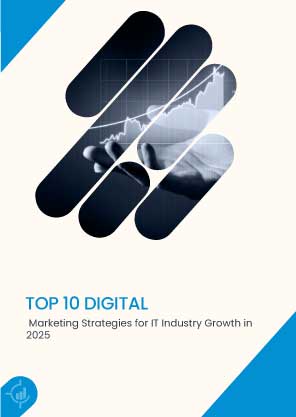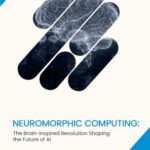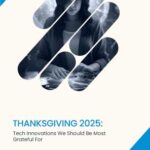or call: +1 (845) 347-8894

or call: +1 (845) 347-8894

“Marketing is no longer about the stuff that you make, but about the stories you tell.” — Seth Godin, Marketing Thought Leader.
This quote rings especially true in 2025, where IT buyers are overwhelmed with technical jargon but hungry for meaningful value. In a landscape dominated by evolving algorithms, shrinking attention spans, and hyper-targeted messaging, digital marketing is no longer a support function; it’s a strategic growth lever for IT firms.
As competition intensifies and buyer journeys grow more complex, traditional approaches are falling short. IT companies must now adopt digital marketing strategies that not only inform but also engage, build trust, and convert. In this article, we’ll explore the top 10 digital marketing strategies shaping IT industry growth in 2025 and how your business can execute them effectively.
AI personalization is no longer a nice-to-have but a necessity. By leveraging AI-powered tools, IT firms can analyze visitor behavior, browsing history, and content preferences to dynamically deliver personalized content. This means showing specific whitepapers to CTOs while offering product demos to DevOps teams. AI also enables predictive targeting—prioritizing prospects most likely to convert based on engagement patterns.
According to Gartner, 82% of B2B buyers want personalized communications, while 57% view it as a positive experience
Machine learning algorithms optimize ad spend by adjusting bids and targeting in real time, increasing campaign efficiency. IT marketers should integrate AI personalization across email campaigns, website experiences, and paid ads to provide a seamless, tailored journey.
Video remains one of the most effective formats for explaining complex IT products and services. Short explainer videos break down technical concepts, live product demos showcase features, and animated tutorials engage busy decision-makers.
IT marketers should produce 2-3 minute technical videos optimized for platforms like YouTube and LinkedIn. Hosting webinars and live Q&A sessions allows real-time interaction, deepening trust. Video clips repurposed for social media help extend reach and keep audiences engaged.
Building communities around IT products boosts peer influence and brand loyalty. Platforms like LinkedIn groups, Slack channels, and GitHub allow IT firms to engage directly with their target audience.
Encouraging users to share success stories or beta test new features creates authentic content that resonates. Influencer partnerships and sponsorships of tech meetups within these communities amplify reach and establish thought leadership.
Customer experience is a strategic differentiator in IT marketing. Buyers expect a frictionless, personalized journey from awareness to post-sale support. Mapping the entire customer journey helps identify pain points and opportunities to improve engagement.
Personalization across channels, including website, email, chatbots, and self-service portals, creates consistency and builds trust. Offering easy access to resources, quick responses to queries, and proactive support improves satisfaction and retention.
Voice assistants and visual search are changing how IT buyers discover solutions. People now search using natural language questions like “What is the best cloud security platform?” or by uploading screenshots of errors.
To capture this traffic, marketers should optimize content for long-tail, conversational keywords and implement schema markup for rich snippets. Tagging images and diagrams with descriptive metadata enhances visibility in visual search results, meeting buyers where they are.
UGC brings credibility that sales pitches cannot match. IT buyers trust peer recommendations and real-world case studies. Encourage customers to share testimonials, post reviews, and contribute content that shows genuine use of your products.
Collect short video testimonials, case studies, or social media posts tagged with campaign hashtags to amplify reach. Sharing open-source contributions or GitHub activity showcases community involvement and transparency.
Security concerns dominate IT procurement decisions. Demonstrating clear compliance with regulations like GDPR, SOC 2, and HIPAA builds confidence among skeptical buyers.
Publish dedicated pages detailing security certifications, data handling practices, and compliance audits. Interactive quizzes or assessments on security readiness engage prospects while positioning your firm as a trusted partner.
Email remains a powerful channel when executed with precision. Use marketing automation platforms to segment your list by role, company size, or behavior and trigger personalized nurture campaigns.
For example, prospects downloading cloud migration guides receive a tailored email series on migration best practices. Use AI to optimize subject lines and send times for better open rates. Regularly cleanse and update lists to maintain deliverability.
Modern IT buyers interact with brands across multiple channels, websites, email, social, chat, and offline events. Omnichannel integration ensures a consistent, personalized experience regardless of touchpoint.
Sync messaging and creative assets across channels and use customer data platforms to track interactions in a single view. Retarget prospects with contextually relevant ads based on previous engagement, improving conversion odds.
Data is the backbone of smart marketing. Use analytics to understand which campaigns drive pipeline, shorten sales cycles, and improve customer retention. Implement multi-touch attribution models to connect activity across channels to closed deals.
Predictive analytics helps identify leads with high lifetime value potential, allowing marketing and sales teams to prioritize resources. Real-time dashboards support agile decision-making and budget optimization.
Crafting a strategy is only half the equation; success comes from how well you execute it. For IT firms, where buyer journeys are complex and sales cycles long, implementation must be precise and aligned with intent. Below are five practical ways to activate these digital marketing strategies and turn them into measurable growth drivers in 2025.
Use AI to tailor content, email workflows, and website experiences based on user behavior and job roles. Begin by analyzing your CRM and website data, then segment audiences by intent (e.g., researchers vs. buyers). Integrate AI tools with your CMS and marketing automation platform to dynamically adjust content based on visitor actions.
Create 2–3 minute product explainers and tech demos that answer common buyer questions. Use YouTube, LinkedIn, and gated landing pages to distribute these videos. Ensure each video ends with a strong CTA, whether it’s “Request a Demo” or “Download the Guide.” Track engagement to optimize future formats and topics.
Build a presence in industry-specific groups like cybersecurity forums, DevOps Slack channels, or data engineering communities. Create value-driven content like how-to posts, AMA sessions with your tech leads, or exclusive invites to private beta programs. This fosters trust and positions your brand as a peer, not just a vendor.
Align messaging, creative assets, and audience targeting across email, social, paid ads, and events. For example, when launching a new SaaS tool, use email to announce it, retarget LinkedIn visitors with case studies, and support your sales team with personalized landing pages. A cohesive experience boosts conversions and reduces funnel leakage.
Move beyond basic metrics. Implement a multi-touch attribution model that shows how various touchpoints whitepaper downloads, video views, and social clicks, contribute to pipeline and revenue. Use this data to prioritize channels, refine messaging, and double down on what’s driving growth. Real-time dashboards help teams pivot faster.
In 2025, IT buyers seek depth, trust, and personalization, not just presence. The ten Digital Marketing Strategies above offer a refined, measurable path to growth by aligning with buyer behaviour, leveraging modern technology, and differentiating with trust-driven storytelling. Every tactic is more than a trend; it’s a strategic enabler for faster growth, lower acquisition cost, and long-term customer value.
The most effective strategies include AI-driven personalization, short-form video marketing, omnichannel integration, community engagement, and data-driven campaign optimization. These approaches help IT firms reach the right audience with precision and build long-term trust.
Personalization allows IT marketers to tailor content and messaging based on the buyer’s role, behavior, and stage in the funnel. In 2025, using AI to personalize at scale boosts engagement, shortens sales cycles, and increases conversions.
Start with scalable tactics like video explainers using in-house teams, segmenting email lists with basic marketing automation tools, and engaging in niche tech forums. You don’t need to implement all ten strategies at once—prioritize based on your goals and audience behavior.
Tools like Google Analytics 4, HubSpot, Marketo, and attribution platforms such as Dreamdata or Ruler Analytics can help track campaign performance, analyze customer journeys, and measure ROI across channels.
When implemented effectively, these strategies generate qualified leads, improve nurturing through personalized content, and enhance buyer trust. This leads to more efficient pipelines, reduced sales friction, and increased deal velocity.
To participate in our interviews, please write to our IntentTech Media Room at sudipto@intentamplify.com




